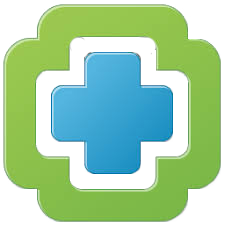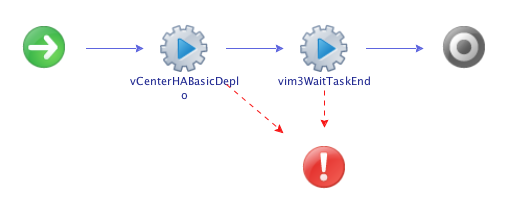VRealize Orchestrator
 Written by Sam McGeown
on 25/6/2021
Written by Sam McGeown
on 25/6/2021
I was doing some testing with adding an external vRealize Orchestrator 8.4 endpoint to vRealize Automation Code Stream 8.4, and it turns out there’s a redirect that happens with the vRO 8.4 appliance that makes the endpoint validation fail. When you enter the URL and click ACCEPT CERTIFICATE the UI will throw an error:
Server error on getting certificates. Http failure response for https://<vRA FQDN>/codestream/api/endpoint-certificate?url=https://<vRO FQDN>: 400 Bad Request
 Written by Simon Eady
on 16/2/2021
Written by Simon Eady
on 16/2/2021
Using vRealize Orchestreator MP in vROps
Product Version - vRealize Operations 7.x and 8.x
A few years ago VMware released the Orchestrator MP which is a superb way to directly call vRO workflows from vROps by way of alerts and actions. This opens the door to all manner of ideas for conditional automation using vROps.
The limitation
Recently for a customer we planned to use the vRO MP to assist a customer with a very unique/niche challenge. vRO was a key component to the challenge and we identified a possible solution using the vRO MP in vROPs which for all intents and purposes looked ideal.
 Written by Sam McGeown
on 21/9/2018
Written by Sam McGeown
on 21/9/2018
Just a quick post today to cover a new vRO action and workflow I’ve uploaded to GitHub that configures vCenter High Availability in the basic mode. This is based on
TL;DR -
 Written by Simon Eady
on 13/4/2018
Written by Simon Eady
on 13/4/2018
There are many improvements, changes and new additions to vROps in version 6.7 but one of the aspects that stands out to me personally is the direction VMware are taking with the product. Aside from the obvious addition of cloud costings and comparisons and a reworked capacity planning (from the ground up) and new hook in to Wavefront (which I really like) there has been some real effort to improve how you can further automate things from vROps.
 Written by Sam McGeown
on 6/4/2017
Written by Sam McGeown
on 6/4/2017I already have a vRealize Orchestrator workflow to shutdown my workload cluster. What I want to do is trigger that by a voice command from Alexa.
Now, the correct and proper thing to do here would be to create a new Alexa skill, write the function in Lambda and connect that to my Orchestrator REST API and execute the workflow. That way I could control the “intents” and “utterances” and have verbal feedback.
 Written by Sam McGeown
on 30/12/2016
Written by Sam McGeown
on 30/12/2016My vSphere lab is split into two halves - a low power management cluster, powered by 3 Intel NUCs, and a more hefty workload cluster powered by a Dell C6100 chassis with 3 nodes. The workload servers are noisy and power hungry so they tend to be powered off when I am not using them, and since they live in my garage, I power them on and off remotely.
 Written by Sam McGeown
on 16/12/2016
Written by Sam McGeown
on 16/12/2016
Back in January 2015 I wrote an article on
Note that none of this is official or supported by VMware as far as I know - it’s the results of my experimentation which has shown some performance improvement by increasing the configured memory pool. Use it at your own risk!
 Written by Sam McGeown
on 19/4/2016
Written by Sam McGeown
on 19/4/2016Big thanks to
I’ve been trying to configure vCloud Air as a vCloud Director host in vRealize Orchestrator in order to create some custom resource actions for Day 2 operations in vRealize Automation. What I found was that there’s *very* little information out there on how to do this, and I ended up writing my own custom resource mapping for the virtual machines to VCAC:VirtualMachine objects - at least that way I could add my resource action. But this still didn’t expose the vCloud Director functionality for those machines. To do this I needed vCloud Air added as a vCloud Director host.
 Written by Sam McGeown
on 30/3/2016
Written by Sam McGeown
on 30/3/2016<img class=“alignright size-thumbnail wp-image-6186” src="/images/2015/07/vRA-Product-Icon-Mac_0.png" alt=“vRA” width=“150” height=“150” - a properties object.
I wanted to create a workflow that I could enable to log all of the keys, values and types of the properties object for each stage of the vRA7 MachineProvisioning workflows, and create a reference for myself on the payload for each stage.
To do this I created a new workflow “debugProperties” and added an input variable called “payload”, type Properties. Next I added a single scriptable task and cycled through the properties. Some of the properties’ values are actually other properties objects, so there’s a function to test the type and iterate through if required.
 Written by Sam McGeown
on 16/3/2016
Written by Sam McGeown
on 16/3/2016VMware KB2140539 where requesting an XaaS (vRealize Orchestrator) blueprint fails with:
Failed to retrieve form from provider
The KB describes it occuring when “more than one VMware vRealize Orchestrator instance is configured for different tenants”. The issue I faced is not the same - in my case, I had the system default tenant configured to use the embedded vRO, and the customer tenant configured to use the system default (which would be the embedded vRO!)
